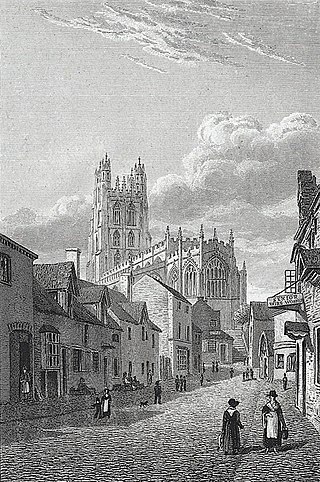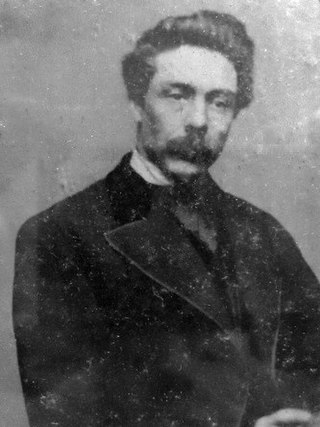Related Research Articles

Gower or the Gower Peninsula is in South West Wales and is the most westerly part of the historic county of Glamorgan, Wales. It projects towards the Bristol Channel. In 1956, the majority of Gower became the first area in the United Kingdom to be designated an Area of Outstanding Natural Beauty.

The Red "Lady" of Paviland is an Upper Paleolithic partial male skeleton dyed in red ochre and buried in Wales 33,000 BP. The bones were discovered in 1823 by William Buckland in an archaeological dig at Goat's Hole Cave which is a limestone cave between Port Eynon and Rhossili on the Gower Peninsula, near Swansea in south Wales. Buckland believed the skeleton was a Roman era female. Later, William Solace examined Goat's Cave Paviland in 1912. There, Solace found flint arrow heads and tools and correctly concluded that the skeleton was in fact a male hunter-gatherer or warrior during the last Ice Age.
The year 1823 in science and technology involved some significant events, listed below.
Below are notable events in archaeology that occurred in 1926.
Below are notable events in archaeology that occurred in 1903.
Below are notable events in archaeology that occurred in 1907.

Prehistoric Wales in terms of human settlements covers the period from about 230,000 years ago, the date attributed to the earliest human remains found in what is now Wales, to the year AD 48 when the Roman army began a military campaign against one of the Welsh tribes. Traditionally, historians have believed that successive waves of immigrants brought different cultures into the area, largely replacing the previous inhabitants, with the last wave of immigrants being the Celts. However, studies of population genetics now suggest that this may not be true, and that immigration was on a smaller scale.
Events from the year 1823 in the United Kingdom.
The decade of the 1790s in archaeology involved some significant events.
This page lists major events of 2007 in archaeology.

This article is about the particular significance of the year 1823 to Wales and its people.
This page lists major events of 2009 in archaeology.
This page lists major archaeological events of 2015.
This page lists major archaeological events of 2018.
This page lists major events of 2019 in archaeology.
This page lists major events of 2020 in archaeology.

Micah Salt was a tailor and amateur archaeologist from Buxton in Derbyshire.
This page lists major events of 2021 in archaeology.
This page lists significant events of 2022 in archaeology.
References
- ↑ Aldhouse-Green, Stephen (October 2001). "Great Sites: Paviland Cave". British Archaeology (61). Retrieved 2010-07-16.
- ↑ Johns, Ashleigh (22 November 2011). "Borough Hill & Cracks Hill". www.daventrydc.gov.uk. Retrieved 22 December 2017.
- ↑ "Ormside Bowl". York Museums Trust . Retrieved 15 February 2018.